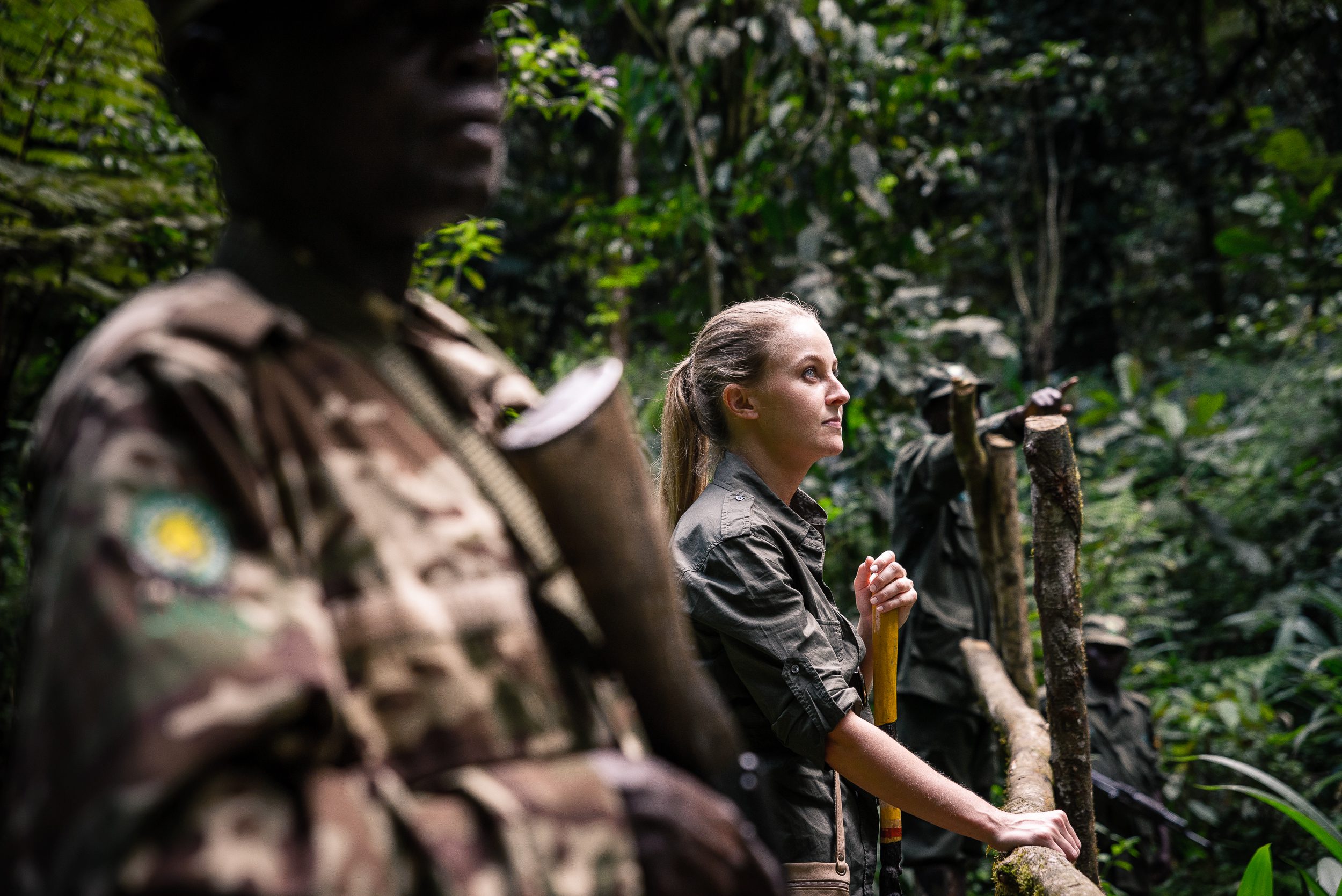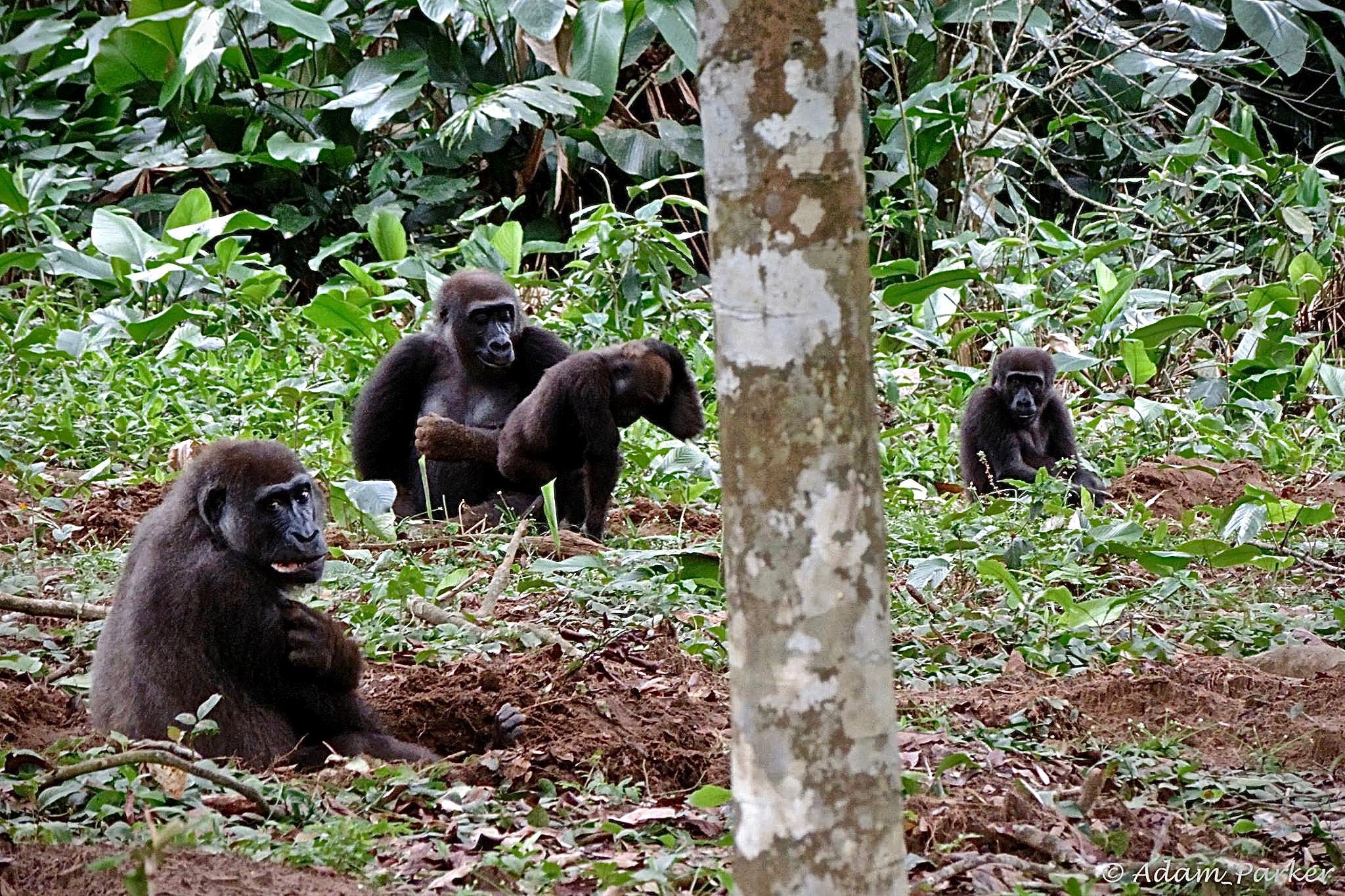Gorillas—the largest living primate—are broadly divided into mountain and lowland. For travelers who want to see mountain gorillas, of which only around 900 still exist, we recommend Rwanda and Uganda. For an off-the-beaten path encounter with western lowland gorillas, head to the Odzala-Kokoua and Nouabale-Ndoki national parks in the Republic of Congo.
Still uncertain if this trip is right for you? Here are 10 reasons why this is one family reunion you won’t want to miss.

A baby gorilla clutches to its mother in the rainforests of Uganda. ©Sanctuary Gorilla Forest Camp
Gorillas are almost human.
Other than chimpanzees and bonobos, no other animal on the planet shares so much DNA with humans. We branched off from gorillas about six to 10 million years ago, and our closeness is evident in uncannily humanlike traits. Gorillas chuckle, and get sad, and are highly susceptible to human diseases, which also means that you will not be allowed to go on the gorilla trek if you display any symptoms of a cold or the flu.
Gorillas are not all the same.
Mountain gorillas, restricted to the lush volcanic slopes of Rwanda, Uganda, and the Democratic Republic of Congo, tend to have much longer and shaggier hair, stockier bodies, and shorter arms than their lowland relatives.

Passing by a family of gorillas relaxing in their natural habitat. ©Buhoma Lodge
Gorillas send smell signals.
Silverbacks—dominant males—use body odor as a form of communication, “yelling” at rival males by emitting scents in order to maintain territory, suppress others’ mood and performance, intimidate rivals, and advertise status.
Gorillas are critically endangered.
While mountain gorillas have been holding on in their protected areas despite human encroachment and violence, lowland gorilla populations are suffering dramatically from illegal hunting of their meat and body parts, diseases such as Ebola, and habitat loss due to industrial agriculture. By 2070, the western lowland gorilla population—numbering around 100,000 today—is predicted to decline by more than 80%. Responsible tourism, which is what we practice, is one way to save gorillas in the wild: The money used to pay for permits and fun local guides, security guards, and park wardens—some of whom are former poachers who found a better way to make a living—as well cover medical services, including monitoring and treating the gorillas for injuries and illness, is helping to ensure their survival and longevity. Gorilla trekking also provides jobs for many other people in the community, not just guides and guards.

It is up to humans to help conserve gorillas and their habitat. ©Sanctuary Gorilla Forest Camp
Gorillas don’t all just eat bananas.
Mountain gorillas are foliovores. They feed mainly on high protein, low fiber leaves, stems, shoots, flowers, bark and even little fruit. Lowland gorillas have a more diverse diet, consisting of many different types of fruit as well as termites and ants.
Gorillas need their space.
In order to limit stress and impact on the animals, and also potential disease transfer, viewing wild gorillas involves some important guidelines. You must stay at least 23 feet away from gorillas, and don’t eat, drink, or smoke. Don’t use flash photography, or cell phones. Speak in a soft voice, and avoid antagonizing the gorillas in any way, either by pointing, making sudden gestures or movements or loud noises. To help conserve these magnificent animals—and make a better viewing experience for you—there are also strict limits on the number of trekkers allowed to visit any one family, ranging from four to 12 people, depending on the location. Visits are usually limited to an hour.

A mother and her baby are spotted by a passing trekking group in Odzala N.P. ©Odzala Discovery Camps
RELATED:6 Ways to Get Ready for Your Gorilla Trek
Gorillas are super social.
Their name comes from the Greek Gorillai, a tribe of hairy women mentioned in an account of a voyage around Africa—and indeed, except for males roaming alone, gorillas generally live in large family groups of around 20, consisting of one adult male and multiple adult females (and their offspring). That male-female bond forms the core of social groups and is reinforced by grooming and close proximity: males offer such services as protection against predators, protection against infanticide by other males, and mating opportunities. Females typically emigrate from the groups into which they’re born to avoid inbreeding. Gorillas build nests. Using branches and leaves, all gorillas over age 3 make both day nests for resting and night nests for sleep, with adult males usually nesting on the ground, and females sometimes nesting in trees. Juveniles are more apt to nest in trees (kids, right?).

Just like humans, gorillas love to socialize and form close relationships with one another. ©Odzala Discovery Camps
Gorillas are mostly teenage-proof.
If you’ve got your learner’s permit or driver’s license, you’re golden. Otherwise, children under age 15 are not allowed on gorilla treks. Generally, people under age 15 are more likely to spread infectious diseases to these sensitive giants, and also more likely to run away frightened when faced with potential aggressive behavior, rather than humbling themselves as you’re meant to.
Gorillas have fingerprints.
Just like us. They also have unique nose prints. We don’t, so they win the individuality award.

Plan Your Visit
Call or email us to learn more about how you can see gorillas in the wild.